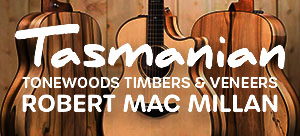Official Luthiers Forum!Owned and operated by Lance Kragenbrink |
| Last visit was: Tue May 28, 2024 5:20 am | It is currently Tue May 28, 2024 5:20 am |
|
All times are UTC |
Forum rules
Be nice, no cussin and enjoy!
| Page 1 of 1 |
[ 24 posts ] |
|
| Author | Message | |||||
|---|---|---|---|---|---|---|
| mikeyb2 |
|
|||||
Joined: Thu Apr 14, 2022 4:11 pm Posts: 56 First name: Michael Last Name: Bradley Country: United Kingdom Focus: Build Status: Amateur |
|
|||||
| Top | ||||||
| bcombs510 |
|
||||||
Joined: Mon Jul 27, 2015 1:21 pm Posts: 3388 First name: Brad Last Name: Combs Focus: Build Status: Amateur |
|
||||||
| Top | |||||||
| jfmckenna |
|
|||||
Joined: Tue May 13, 2008 3:44 pm Posts: 6237 Location: Virginia |
|
|||||
| Top | ||||||
| Alan Carruth |
|
|||||
Joined: Sat Jan 15, 2005 5:50 pm Posts: 3886 Location: United States |
|
|||||
| Top | ||||||
| J De Rocher |
|
||||||
Joined: Mon Apr 16, 2012 5:47 pm Posts: 2431 First name: Jay Last Name: De Rocher City: Bothell State: Washington |
|
||||||
| Top | |||||||
| mikeyb2 |
|
|||||
Joined: Thu Apr 14, 2022 4:11 pm Posts: 56 First name: Michael Last Name: Bradley Country: United Kingdom Focus: Build Status: Amateur |
|
|||||
| Top | ||||||
| doncaparker |
|
|||||
Joined: Wed Dec 18, 2013 3:52 am Posts: 2986 First name: Don Last Name: Parker City: Charleston State: West Virginia Zip/Postal Code: 25314 Country: USA Focus: Build Status: Amateur |
|
|||||
| Top | ||||||
| phavriluk |
|
|||||
Joined: Tue Feb 14, 2012 1:49 am Posts: 962 First name: peter Last Name: havriluk City: granby State: ct Zip/Postal Code: 06035 Country: usa Focus: Build Status: Amateur |
|
|||||
| Top | ||||||
| bobgramann |
|
|||||
Joined: Mon Oct 17, 2011 9:10 pm Posts: 654 First name: Bob Last Name: Gramann City: Fredericksburg State: VA Zip/Postal Code: 22408 Country: USA Focus: Build Status: Professional |
|
|||||
| Top | ||||||
| Hesh |
|
||||||
Joined: Fri Nov 02, 2007 2:49 pm Posts: 13196 Location: Ann Arbor, Michigan First name: Hesh Last Name: Breakstone City: Ann Arbor State: Michigan Country: United States Status: Professional |
|
||||||
| Top | |||||||
| Colin North |
|
||||||
Joined: Fri Jul 10, 2009 9:44 am Posts: 5429 First name: colin Last Name: north Country: Scotland. Focus: Build Status: Semi-pro |
|
||||||
| Top | |||||||
| jfmckenna |
|
|||||
Joined: Tue May 13, 2008 3:44 pm Posts: 6237 Location: Virginia |
|
|||||
| Top | ||||||
| Terence Kennedy |
|
|||||
Joined: Fri Dec 14, 2007 8:21 pm Posts: 3318 Location: Alexandria MN |
|
|||||
| Top | ||||||
| Alan Carruth |
|
|||||
Joined: Sat Jan 15, 2005 5:50 pm Posts: 3886 Location: United States |
|
|||||
| Top | ||||||
| meddlingfool |
|
|||||
Joined: Thu Feb 21, 2008 12:15 am Posts: 7280 First name: Ed Last Name: Bond City: Vancouver Country: Canada Focus: Build Status: Professional |
|
|||||
| Top | ||||||
| david farmer |
|
||||||
Joined: Wed Nov 12, 2008 2:13 am Posts: 832 Location: Durango CO First name: Dave Last Name: Farmer City: Durango State: CO |
|
||||||
| Top | |||||||
| James Orr |
|
||||||
Joined: Wed Feb 15, 2006 12:37 pm Posts: 4781 |
|
||||||
| Top | |||||||
| doncaparker |
|
|||||
Joined: Wed Dec 18, 2013 3:52 am Posts: 2986 First name: Don Last Name: Parker City: Charleston State: West Virginia Zip/Postal Code: 25314 Country: USA Focus: Build Status: Amateur |
|
|||||
| Top | ||||||
| Pmaj7 |
|
||||||
Joined: Sun Feb 01, 2009 1:50 am Posts: 2247 Location: Seattle WA Focus: Build Status: Semi-pro |
|
||||||
| Top | |||||||
| Colin North |
|
||||||
Joined: Fri Jul 10, 2009 9:44 am Posts: 5429 First name: colin Last Name: north Country: Scotland. Focus: Build Status: Semi-pro |
|
||||||
| Top | |||||||
| Alan Carruth |
|
|||||
Joined: Sat Jan 15, 2005 5:50 pm Posts: 3886 Location: United States |
|
|||||
| Top | ||||||
| CarlD |
|
|||||
Joined: Fri Jan 11, 2013 7:26 pm Posts: 460 First name: Carl Last Name: Dickinson City: Forest Ranch State: California Zip/Postal Code: 95942 Country: USA Focus: Build Status: Amateur |
|
|||||
| Top | ||||||
| Colin North |
|
||||||
Joined: Fri Jul 10, 2009 9:44 am Posts: 5429 First name: colin Last Name: north Country: Scotland. Focus: Build Status: Semi-pro |
|
||||||
| Top | |||||||
| Pmaj7 |
|
||||||
Joined: Sun Feb 01, 2009 1:50 am Posts: 2247 Location: Seattle WA Focus: Build Status: Semi-pro |
|
||||||
| Top | |||||||
| Page 1 of 1 |
[ 24 posts ] |
|
All times are UTC |
Who is online |
Users browsing this forum: Bing [Bot], Dmaxwell, Facebook [Bot] and 5 guests |
| You cannot post new topics in this forum You cannot reply to topics in this forum You cannot edit your posts in this forum You cannot delete your posts in this forum You cannot post attachments in this forum |



















